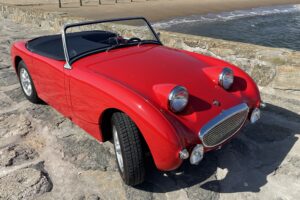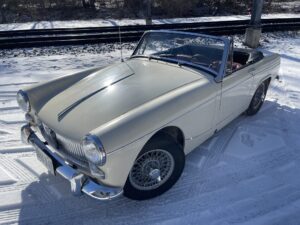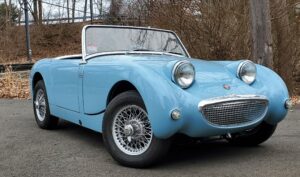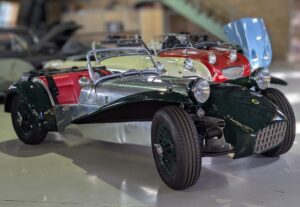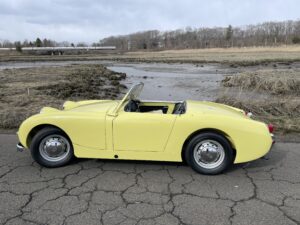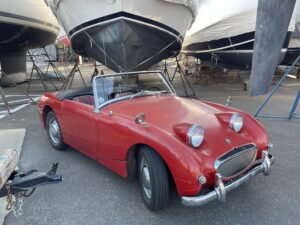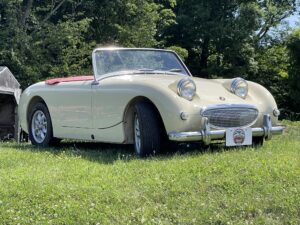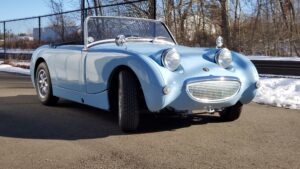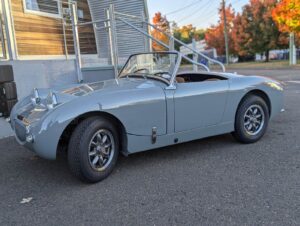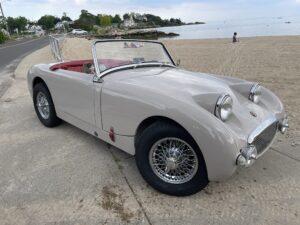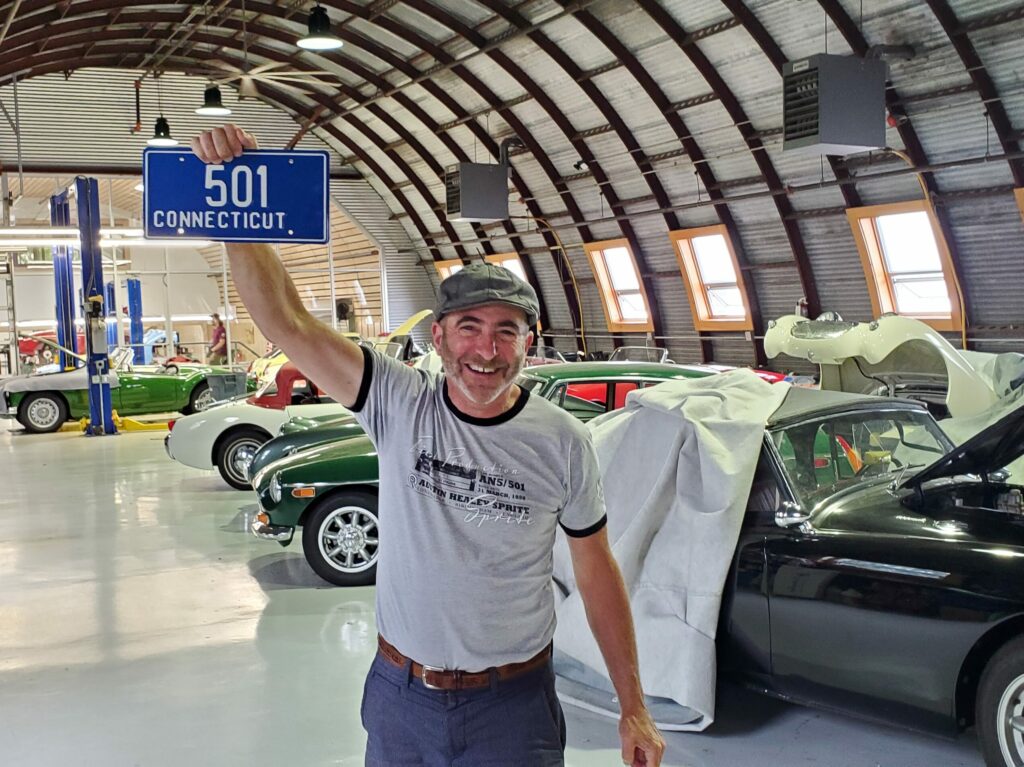
Bugeye numbers are very confusing. Each Bugeye Sprite has five unique numbers stamped on the car. 501 is no exception.
The chassis or VIN number is located under the carburetors. AN5L 501 is missing the “L” on the chassis plate even though this car was a left hand drive car from day one. Our heritage certificate verifies that he “L” was omitted from the VIN plate due to human error on the production line.
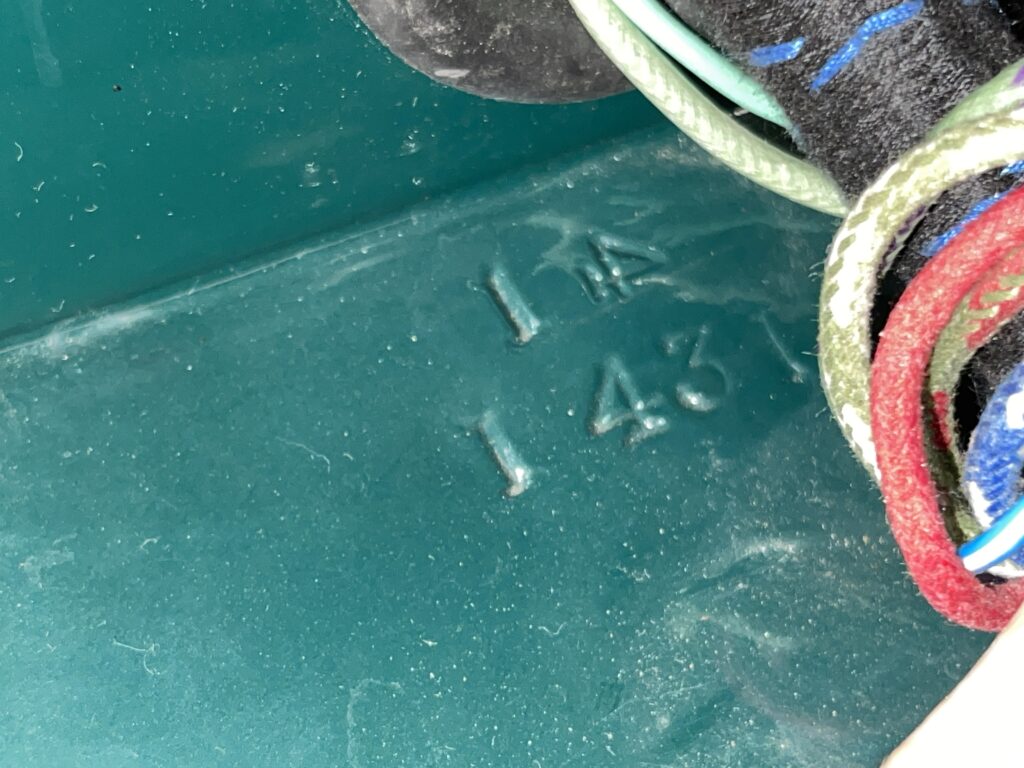
How could it be that VIN numbers and stampings wouldn’t be exact? Perhaps it was a simple mistake. Maybe the plate was made before the plans were solidified to make the first car LHD and USA-bound. Or maybe the man on stamping was a bit green.
Check out the stamp above, an often paint-filled body stamp found in the engine bay where the wiring harness passed through the firewall. The sideways “four” is another factory stamping error from the early days of Sprite production. All these stamps observed on later cars are single lines. It looks to me like the punch was incorrectly held on its side, so the first row was abandoned, and the operator started over on line two. This would be the second stamping error on this particular car (and the only time I have seen there sorts of errors on a Frogeye).
These engine compartment stamps shown here (along with the AN5 number in the door jamb) are not recorded anywhere. None of the five numbers on any of these cars were meant to match… they were simply “in range.” Only the engine, BAE (body) number, and VIN/chassis number were recorded. The other two numbers are thought to be numbers used before assembly, as components arrived from various subcontractors.
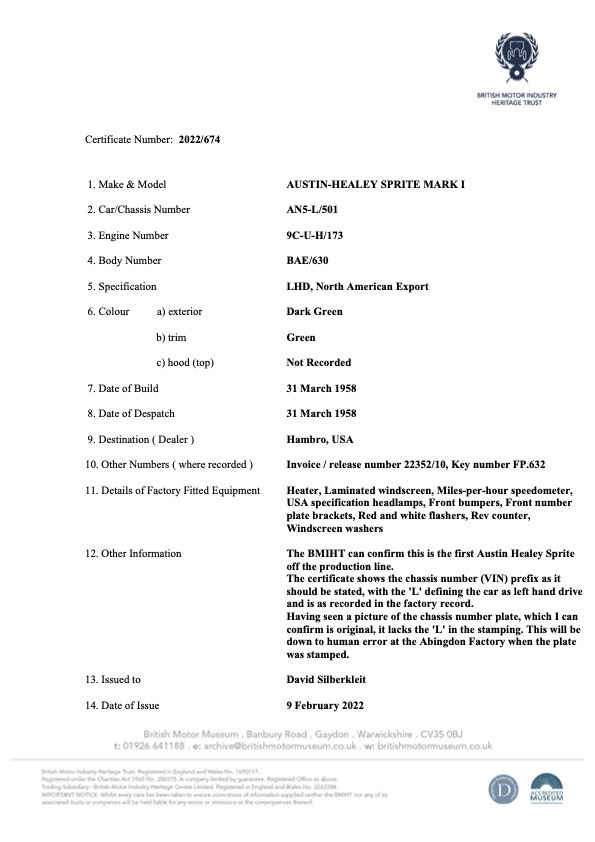
The firewall number above, whether 1431, 431 or 143, would all be plausible numbers on car 501. These stamps are the original, in that the type font matches all the other numbers in this location observed on other cars. The meaning of this number is not clear.
When I first viewed photos of 501 for sale in California in 2012 in its unrestored state, I was uncertain that this was legitimate, so as the price rose and got uncomfortable for me, I let it go, and the car went to Australia for restoration by the new owner. Now that we have it back in the states, and now that we have ten more years of experience restoring and repairing these cars, this previously hidden stamping is one more data point that confirms this is the real deal and a very early car. This sideways stamping also further validates what I was told by the lead archivist at the British Motor Heritage trust… these cars were stamped by humans, and, especially with the early cars, they occaisionally made mistakes.
In the video below, you can see the proper location of all the numbers mentioned above..
If you are wanting to better understand the numbers (and original equipment as well exact build date and original destination) for your particular classic British car, you’ll enjoy having your own heritage certificate, which you can order by clicking here!
